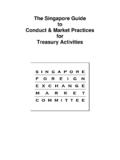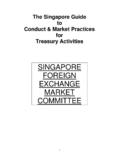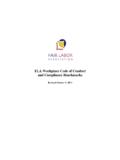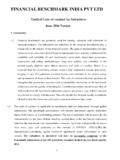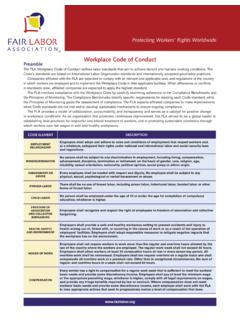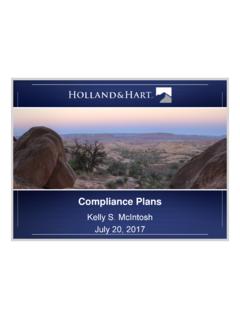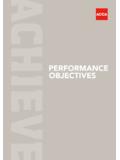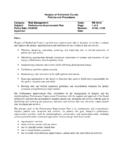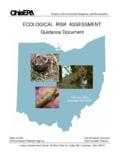Transcription of The Singapore Guide to Conduct and Market Practices for ...
1 1 The Singapore Guide to Conduct and Market Practices for the Wholesale Financial Markets Published by The Singapore Foreign Exchange Market Committee Updated and Released 12 April 2018 2 The Singapore Guide to Conduct and Market Practices for the Wholesale Financial Markets Contents Chapter Chapter Title Topics Page Introduction 5 I Ethics & Behavioural Standards 1. Adoption of the Global Code Principles 2. Confidentiality 3. Bets and Gambling 4. Entertainment, Gifts and Favours 5. Dealing for Personal Account 6. Market Misconduct 7. Professional Knowledge 9 II Governance, Risk Management and Compliance Principles 1. Adoption of the Global Code Principles 2. Segregation of Duties 3. Money Laundering, Terrorism Financing, Fraud and Other Criminal Activities 4.
2 Transactions with Clients and Counterparties 5. Electronic Trading Activities 14 III General Dealing Principles and Market Conduct 1. Adoption of the Global Code Principles 2. Price/Rate Quotations 3. Handling Client Orders 4. Intraday Deal Checks 5. Broker Positions 6. Points & Position Parking 7. Stop Loss Orders 8. Recording of Communications 9. Direct Dealing 10. Dealing Amounts 11. Complaints Procedure 12. Arbitration Procedure 13. Error Trades 14. Brokerage 20 IV Back Office Practices 1. Adoption of the Global Code Principles 2. Confirmation Procedure 3. Settlement Procedure 4. Penalties for Late Payment 27 3 V Handling Market Disruptions 1. General Description 2. Role of SFEMC 3. Communication during Disruption 4.
3 Ethical Standards 5. Settlement during Market Disruption 6. Trading Facility/Platform and Central Counterparty Rules 31 VI Foreign Exchange / Non-Deliverable Forward Dealing Practices Part A: Foreign Exchange 1. Market Trading Hours 2. Rollovers of Foreign Exchange Transactions at Off- Market Rates 3. Value Dates 4. Market Disruption & Unforeseen Holidays 5. Transaction Dispute 6. Handling Credit Issues 7. Foreign Exchange Swap Dealing 8. Rate Setting on Foreign Exchange Swaps 9. Dealing Amounts Part B: Non-Deliverable Forwards 10. Product Definition 11. Settlement Procedure and Fixing 12. Trading Hours 13. Settlement Dates & Fixing Dates 14. Market Disruption & Unscheduled Holiday 15. Transaction Dispute 16. Handling Credit Issues 17.
4 Quoting Convention 18. Liquidity Swap 19. Swaps Against Fix 20. Dealing Amounts 34 VII Debt Securities Dealing Practices 1. General References on Market Practices 2. Price Quotations 3. Value Dates, Settlement Date Convention and Holiday Convention 4. Clearing System and Settlement Platform 41 VIII Money Market Dealing Practices 1. Value Dates 2. Name Disclosure 3. Closing Deals 42 4 IX OTC Derivatives Dealing Practices Part A: Interest Rate Swaps (IRS) / Non-Deliverable Swaps (NDS) / Cross-Currency Swaps (CCS) / Forward Rate Agreement (FRA) 1. Product Description 2. Dealing through Brokers 3. Dealing Procedures 4. Settlement of Differences Part B: Currency Options 5. Dealing Procedures Part C: Interest Rate Options 6.
5 Product Description 7. Dealing Procedures 44 X Benchmark Rate Setting 1. Application 2. Governance 3. Surveyed Benchmarks Requirements 4. Traded Benchmarks Requirements 5. Surveyed and Traded Benchmarks Best Practices 46 Appendix A Relationship between this Guide and the Global Code 52 Appendix B Working Group Members 55 5 INTRODUCTION PURPOSE The smooth, efficient and fair functioning of a financial Market depends heavily on the professional standards and integrity of those who are engaged in it. As the Market grows in size, diversity and complexity, the demands for higher ethical Conduct and uniform Practices increase correspondingly. In helping to foster Singapore s continual growth as a key international financial centre, the Singapore Foreign Exchange Market Committee ( SFEMC ) reaffirms its belief that the centre s prosperity and viability is inextricably intertwined with its reputation for excellence, integrity and professionalism.
6 In line with this belief, the SFEMC has developed this set of principles of good practice, The Singapore Guide to Conduct and Market Practices for the Wholesale Financial Markets 1 ( Guide ), also commonly referred to as The Blue Book . This Guide applies in parallel with the FX Global Code (the Global Code ).2 The Global Code is a code of Conduct for the global wholesale foreign exchange Market , and the SFEMC has endorsed the Global While the Global Code applies only to foreign exchange, this Guide applies to foreign exchange, other asset classes and the setting of financial benchmarks. This Guide , together with the Global Code, is intended to foster a high standard of Conduct and good Market Practices , ensure equitable and healthy relationships between participants and facilitate Market efficiency.
7 APPLICABILITY Market PARTICIPANTS This Guide applies to all participants in Singapore that are engaged in the wholesale financial markets for all asset classes covered by this Guide ( Market Participants ). Market Participants include, without limitation, the following: a. sell-side entities, including banks, merchant banks and other recognised financial institutions; b. brokerage firms, including money brokers, interdealer brokers and firms offering electronic broking services ( Brokers ); c. buy-side entities, including asset managers, sovereign wealth funds, hedge funds, pension funds, insurance companies, corporate treasury departments and family offices running treasury operations; d. non-bank liquidity providers; e.
8 Firms running automated trading strategies, including high-frequency trading strategies, and/or offering algorithmic execution; 1 This Guide was previously known as The Singapore Guide to Conduct and Market Practices for Treasury Activities . 2 See Applicability Asset Classes below for the relationship between this Guide and the Global Code. See Appendix A for examples of how this Guide applies in parallel with the Global Code. 3 The SFEMC collaborated in the development of the Global Code. The SFEMC is also a member of the Global Foreign Exchange Committee. The Global Foreign Exchange Committee promotes, maintains and updates the Global Code on a regular basis, and considers good Practices regarding effective mechanisms to support adherence.
9 6 f. trading facilities and platforms, including e-trading platforms; and g. affirmation and settlement platforms. This Guide applies to entities, as well as individuals who Conduct activity on behalf of such entities. Such individuals include dealers, traders, sales people and structurers. In this Guide , unless the context otherwise requires, the term Market Participant is used to refer generally to both entities, as well as the individuals who Conduct activity in the wholesale financial markets on behalf of entities. APPLICABILITY ASSET CLASSES This Guide is applicable to all wholesale dealings in the exchange-traded and over-the-counter markets for: 1. Foreign Exchange; 2. Debt Securities; 3.
10 Money Market Instruments; 4. Derivatives Products; and 5. Other Market Instruments (new or emerging financial products). Relationship with the Global Code Although the Global Code is the code of Conduct for the foreign exchange Market in Singapore , this Guide also applies to foreign exchange. It sets out additional principles to cater to the specific circumstances of the Singapore foreign exchange Market . The Global Code has two types of principles (1) generic principles4 that can apply equally to other asset classes, and (2) principles that address specific concerns with the foreign exchange market5 ( FX-specific Principles ). The generic principles would also be good Practices for the non-foreign exchange markets.

